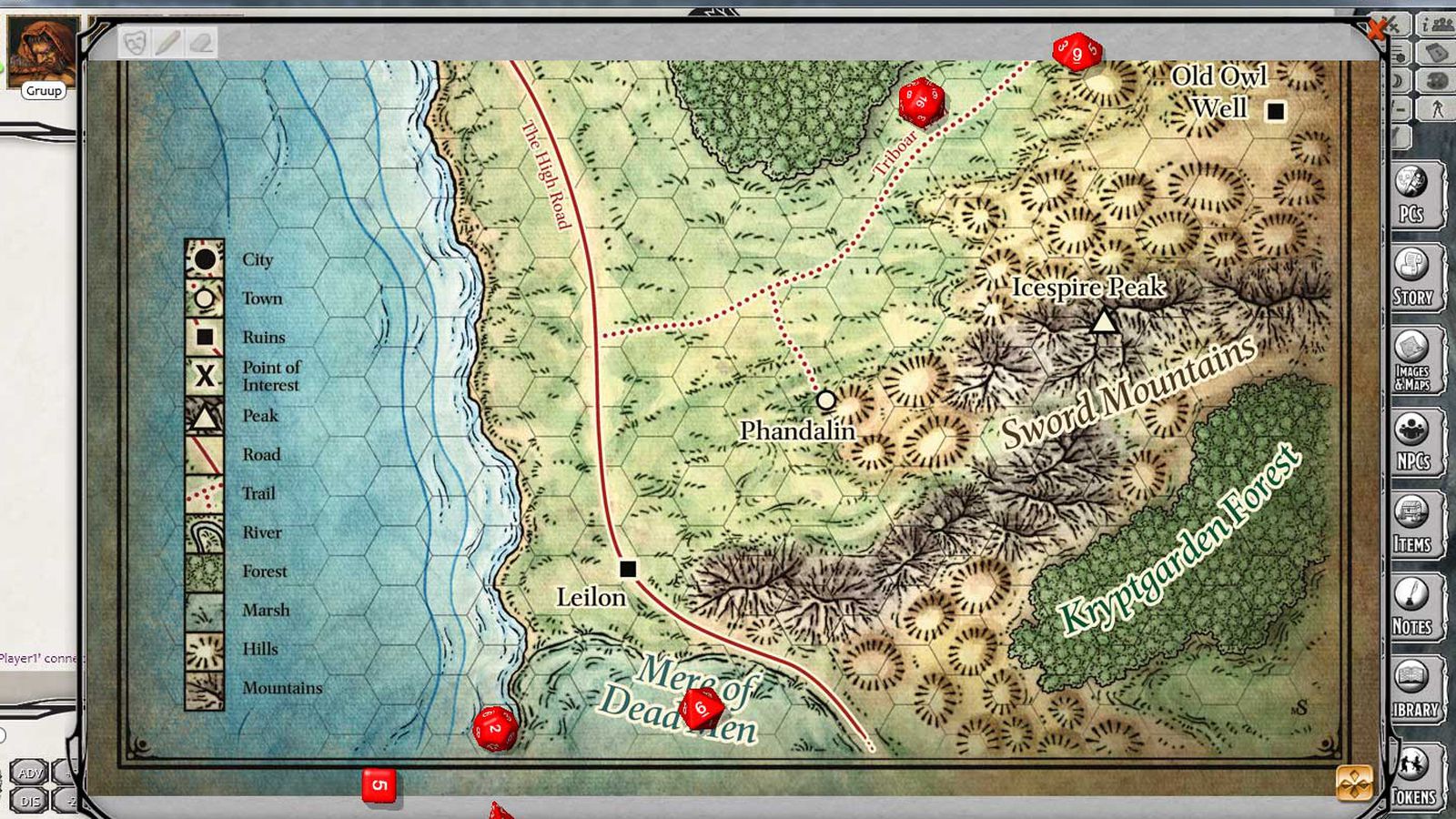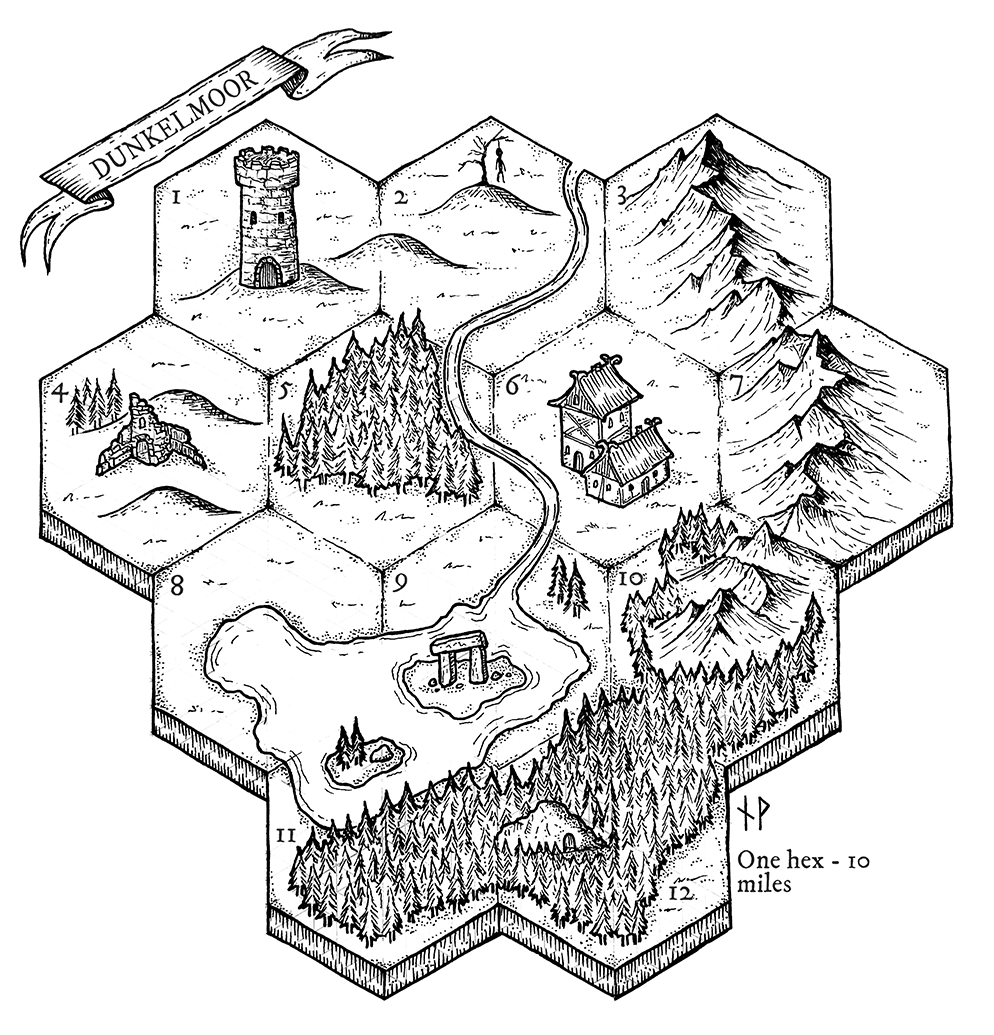

I think there’s a market for your hexcrawl, if you wanted to do it in D&D 5e and publish under the OGL, or publish an OSR version for Basic D&D or a retroclone. If you don’t, can you please recommend some shortcut materials to assist in building a hexcrawl? Adventures/dungeons to insert in places, a map, encounters, anything that might be pre-prepared for those of us who have limited time? (I have kids, and Scouts, and church choir, and…) In fact, in a few years, those kids are going to be prime age for a long, regular D&D adventure, and a hexcrawl might just fit the bill.
#D d hex map maker pdf
Thanks for sharing them.ĭo you have a published version of your hexcrawl adventure? A PDF (or something) that I could purchase/download? I’d love to be able to run a long hexcrawl adventure, but I don’t necessarily have the time to build it all from scratch. I’ve been spending the last few days reading over your materials on GMing in your spare time, and I love them. I accomplished both of these goals by creating a unified, streamlined system of encounter checks. Furthermore, I wanted a rich system for generating encounters (in order to both create content and to replace the ephemeral hex keys I had eschewed). (Particularly useful for an open gaming table.) In other words, the key is geography, not ephemera.įourth, to support all of these goals (hidden hexes, exploration, reusable material) I wanted to introduce uncertainty into whether or not the keyed content of a particular hex would be experienced (instead of automatically triggering the content when the hex was entered). While this system certainly could be used with such keys, my intention was to focus the key on content that could be used more than once as PCs visit and re-visit the same areas. He sings songs of high adventure and fighting Orcs. Traditional hexcrawls will often included hexes keyed with encounters like this one (from the Wilderlands of Magic Realm):Ī charismatic musician sits on a rock entertaining a group of Halfling children. And note that I said “location”, not encounter. Third, the system is built around the assumption that every hex on the map will have at least one keyed location.

It’s built around having the players constantly making new discoveries (even in places they’ve been before). The structure, therefore, includes a lot of rules for navigation, getting lost, and finding your way again. Second, building on that, the structure is explicitly designed for exploration. Therefore, the hexes in this hexcrawl system are a player-unknown structure. Although I find the abstraction of the hex extremely convenient on the GM’s side of the screen (for tracking navigation, keying encounters, and so forth), I’m of the opinion that it has negative effects on the other side of the screen: I want the players interacting with the game world, not the abstraction. Although still very much a work in progress, over the next few days I intend to do exactly that.īefore we get to the actual hexcrawling, however, I want to take a moment to clarify what my design goals were (and are) for this project.įirst, I wanted a structure which would hide the hexes from the players. Since then I’ve received several requests to share my rules for hexcrawling. It wasn’t until Necromancer Games brought the Wilderlands back into print and Ben Robbins’ West Marches campaign went viral that people started to rediscover the lost art of the hexcrawl.ĭuring my discussion of game structures, I mentioned that I had been developing and playtesting a robust structure for hexcrawling. 2 nd Edition removed hexcrawling procedures from the rulebooks entirely. By 1989 there were only a few vestigial hex maps cropping up in products and none of them were actually designed for hexcrawl play. Initially a core component of roleplaying games, the hexcrawl structure slowly faded away. (4) Whenever the PCs enter a new hex, the GM tells them the terrain type of the hex and triggers the encounter or location keyed to that hex: The PCs experience the event, encounter the monsters, or see the location. Determine the hex the PCs start in and track their movement. (3) Use (or design) mechanics which will let you determine how far the PCs can move while traveling overland. (It is not necessary to key all of the hexes on the map.) Using the numbered references, key each hex with an encounter or location. Additional features like settlements, dungeons, rivers, roads, and polities are also typically shown on the map.

In general, the terrain of each hex is given as a visual reference and the hex is numbered (either directly or by a gridded cross-reference). As part of my essay on game structures in roleplaying games, I specifically discussed the basic structure of the hexcrawl:


 0 kommentar(er)
0 kommentar(er)
